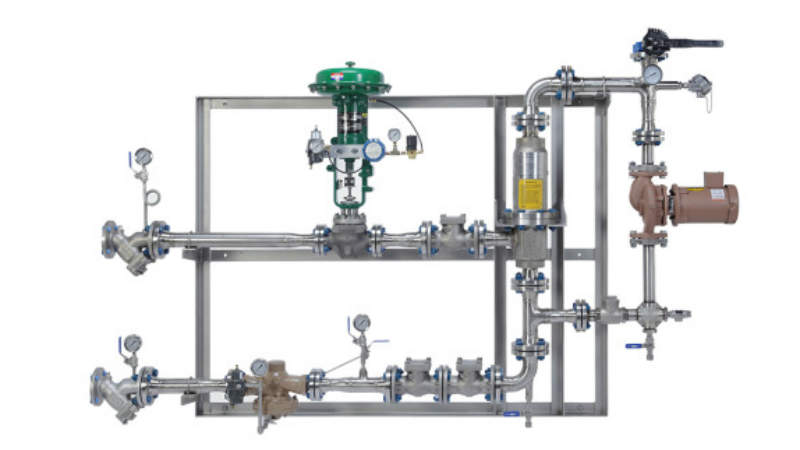
Maintaining a reliable and safe plant sanitation system is a continuous challenge for companies in the food industry.
This means making sure that all areas of the plant have hot water at the required temperatures regardless of load. Precise temperature control at the necessary volume needs to be available whether during peak load clean-up or ongoing daily requirements. At the same time, energy efficiency and capital costs need to be considered, while always keeping operator safety in mind.
Various methods of hot water heating are available including gas-fired contact heaters, shell-and-tube heat exchangers, hot water tanks methods, as well as point of use steam/water mixing valves.
Pick Heaters has focused on the application of steam/water mixing valves and how direct steam injection (DSI) water heating offers an alternative, satisfying all the goals of efficiency, reliability, lower cost, and safety.
The individual steam/water mixing tees can be found in many plants. They normally come complete with the hose assembly and spray nozzle, providing an easy single source of supply. Also considered a method of direct steam injection (DSI), steam is directly injected into the water flow, but in this case at each point-of-use. This creates a potential safety issue for plant personnel.
The mixing tee is designed with an internal steam poppet, serving to shut off steam if the minimum water supply pressure is not maintained. This can fail or stick open after time due to scale or wear. The result is live steam or scalding hot water exiting the hose.
One advantage of the mixing valve can quickly become a serious fault. Operators have easy access to changing setpoint temperature. However, in the misguided idea of getting their job done quicker, the operator will increase the set point. Hotter is not better. Tampering of the set point is inefficient and can result in a costly safety incident.
Pick provides an alternative to the point of use mixing valve. The Pick Variable Flow Heater can be installed in a central, utility supply area, accessed only by permitted personnel.
Since the heater is a distance away from the use points, temperature safety overrides can be put in place to quickly respond to overheated water issues prior to it ever reaching a use point.
Various methods of hot water systems are implemented in food plants to provide sanitation hot water, all designed to perform under optimum conditions. As we know, however, optimum is not always the norm. Direct steam injection systems, installed to heat water in-line in a central location of the plant offers the best opportunity to meet needs for efficiency, cost savings and most importantly, operator safety.
